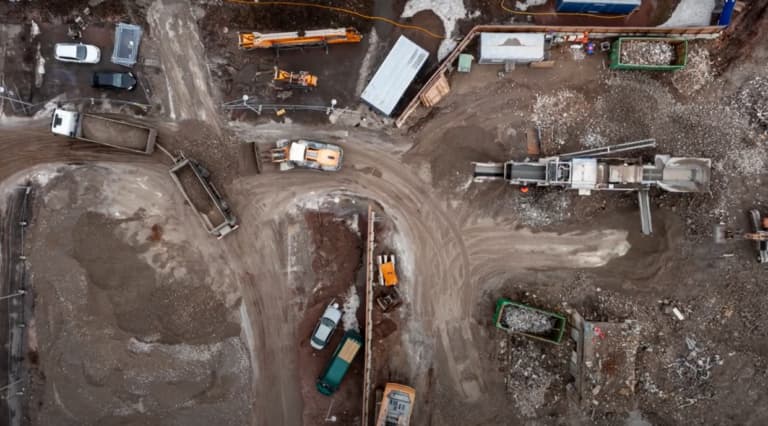Interview with Thomas Stadler, former CIO of Bouygues Energies & Services Switzerland.
Disclaimer: the views, information, or opinions expressed in this article are solely those of the individuals involved and do not necessarily represent those of their current or past employers.

“With Planisy, scheduling becomes a truly dynamic activity based on a holistic view of resources within and across projects”
We recently met Thomas Stadler to talk about the current challenges and opportunities of the Construction sector. We discussed the “move toward digital”, the players in that field, and how tools such as PlanisyTM – from dizmo AG – can help them be more competitive. Below he answers some key questions:
1. Question, Interviewer: What do you think are some of the current challenges for companies operating in the construction field?
Thomas: The construction sector is very diversified and fragmented, and its ecosystem is composed of many players, each facing some unique challenges. However, in the current economic and geopolitical environment, many of the uncertainties and practical difficulties apply across the board to all segments and all players, whether they are large companies or small and medium-sized enterprise (SME).
2. Question, Interviewer: Can you give some examples?
Thomas: Everyone in the value chain is directly or indirectly impacted by supply chain issues, many of which have been disrupted first by the pandemic and then by the conflict in Europe. The resulting depletion of stock, coupled with rising material costs, is causing headaches to suppliers, distributors, builders, and clients.
At the same time, most of them are also facing an increase in labour costs and staff shortages, which further affect their operations and ability to deliver. The looming risk of recession across Europe makes it difficult to plan investments too, both for buyers and builders.

3. Question, Interviewer: In such a complicated global context, which opportunities exist and how can companies best position themselves to take advantage of them?
Thomas: As always happens, some of the very same challenges represent opportunities up for grabs. The disruption of the supply chain, for example, opens opportunities for emerging and local companies to gain new customers where previously larger established players had all the market share. Also, the energy crisis is pushing renovation projects for existing and old buildings to reduce their carbon footprint, as well as new projects for installations of renewable energy systems.
To take advantage of such opportunities, and at the same time overcome the difficulties we mentioned, companies need to drastically innovate to increase their operational efficiency. Even for simple construction projects, they need to optimise the use of their limited resources, their highly skilled and expensive personnel as well as their tools and machinery, which have a direct impact on cost and business outcome.
4. Question, Interviewer: How can IT help achieve such competitiveness?
Thomas: The construction sector has been traditionally quite technology-intensive and now becomes also more software-intensive, in a transformational move toward digital.
The scope of IT systems in support of construction projects needs expanding beyond the traditional ERP systems, Project Management tools, and their task-centric model. Operation managers need tools capable of managing the inter-relation between all types of resources, whether they are human resources, materials, locations, physical and digital resources, at an affordable price and reduced total cost of ownership.
The pandemic brought us into a new world where we need to be able to quickly react and adjust to unexpected internal and external factors affecting the availability of resources, which impact cost and timelines. IT can help close the gap between traditional systems and those new requirements.
5. Question, Interviewer: What is your experience of Planisy and how it helps Companies in the construction sector achieve the above level of optimization of their dynamic scheduling activity?
Thomas: I have known dizmo AG for a few years and I was pleased and interested when I heard Planisy had been created. With Planisy, scheduling becomes a truly dynamic activity based on a holistic view of resources within and across projects. It virtualizes the whole resources environment of construction companies, so that planning and scheduling of resources of all types and functions can be finally harmonised.
Potential conflict of resources can be projected and avoided. Unexpected changes and delays can be rapidly accounted for, and the resulting conflicts interactively resolved in real time.
I have played with many planning tools, and ERP systems in general, over the past 20+ years. I have witnessed meetings with people fighting for resources over whiteboards. Now there is a truly collaborative tool, Planisy, where teams can make their complex decisions simple. A tool where all types of resources can be interactively managed. A tool where, ever-changing requirements, constraints, and dependencies can be accounted for on-the-fly, and a new plan instantly visualised.
In the current context, scheduling has become one of the most exasperating tasks in construction. Planisy represents one of the best and most innovative solutions in the market to address this challenge. Its natural expandability makes it suitable for SMEs and able to scale up for larger size companies or multiple projects handling too.